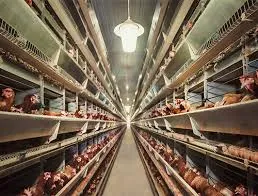silos de almacenamiento de granos
Nov . 24, 2024 21:59 Back to list
silos de almacenamiento de granos
The Importance of Grain Storage Silos
Grain storage silos play a critical role in the agricultural industry by providing a safe and efficient means to store vast quantities of grains such as wheat, corn, rice, and barley. These structures, often towering and cylindrical in shape, are essential for maintaining the quality of agricultural produce and ensuring food security in a world increasingly faced with population growth and climate challenges.
Historical Perspective
Historically, humans have sought various ways to store grains to protect them from pests, moisture, and spoilage. Early civilizations utilized rudimentary methods, such as underground pits and earthenware pots, to secure their harvests. However, with the advent of modern agriculture and the need to handle larger quantities of produce, the invention of grain silos revolutionized grain storage. Today, silos are constructed from durable materials like steel and reinforced concrete, capable of holding thousands of tons of grain.
Types of Silos
There are several types of grain silos, each designed to meet different storage needs. The most common types include
1. Flat-bottom Silos These are designed with a flat base and are typically used for bulk storage. They allow for easy unloading and are commonly found in commercial grain handling facilities.
2. Conical-bottom Silos These feature a conical base that aids in the flow of grain towards the discharge point. This design is often used in feed mills and grain elevators.
3. Bunker Silos These are above-ground structures typically used for silage rather than dry grains. They are commonly used in dairy farming but can also store corn and other grains.
4. Reinforced Concrete Silos Known for their durability, these silos can withstand extreme weather conditions. They are ideal for long-term storage and can be designed to any capacity.
5. Metal Silos Lightweight and easier to assemble, metal silos are commonly used in smaller farming operations. They are often more affordable and can be placed near the fields for ease of access.
silos de almacenamiento de granos

Advantages of Grain Silos
The use of grain silos offers numerous advantages
- Preservation of Grain Quality Silos protect grains from environmental factors such as moisture, pests, and rodents. By maintaining a controlled atmosphere, silos help to preserve the nutritional quality and viability of grains for extended periods.
- Efficient Space Utilization Silos occupy a smaller footprint compared to traditional storage methods, allowing a higher volume of grains to be stored in a given area. This efficient use of space is particularly crucial in regions with limited land availability.
- Reduced Labor Costs With automatic loading and unloading systems, silos reduce the need for manual labor. This efficiency not only lowers operational costs but also minimizes the risk of injury among workers.
- Streamlined Distribution Silos often come equipped with advanced monitoring systems that allow for real-time tracking of grain conditions. This assists farmers and distributors in planning for market demands and ensures timely deliveries.
Challenges and Considerations
Despite their many benefits, grain silos are not without challenges. The initial investment for constructing a silo can be significant, and maintenance costs must also be taken into account. Furthermore, silos must be properly aerated and monitored to prevent spoilage or the development of molds and pathogens inside. The environmental impact during the construction of silos is another consideration, as it is essential to implement sustainable practices.
Conclusion
In conclusion, grain storage silos serve as a backbone of modern agricultural practices, ensuring that harvests are safely stored while maintaining their quality over time. As the global population continues to rise, the efficiency and effectiveness of grain storage solutions will become increasingly vital. By investing in advanced silo technology and innovative storage methods, we can contribute to a more sustainable future in food production, safeguarding both resources and the integrity of the food supply chain.
-
Hot Sale 24 & 18 Door Rabbit Cages - Premium Breeding Solutions
NewsJul.25,2025
-
Automatic Feeding Line System Pan Feeder Nipple Drinker - Anping County Yize Metal Products Co., Ltd.
NewsJul.21,2025
-
Automatic Feeding Line System Pan Feeder Nipple Drinker - Anping County Yize Metal Products Co., Ltd.
NewsJul.21,2025
-
Automatic Feeding Line System - Anping Yize | Precision & Nipple
NewsJul.21,2025
-
Automatic Feeding Line System - Anping Yize | Precision & Nipple
NewsJul.21,2025
-
Automatic Feeding Line System-Anping County Yize Metal Products Co., Ltd.|Efficient Feed Distribution&Customized Animal Farming Solutions
NewsJul.21,2025






